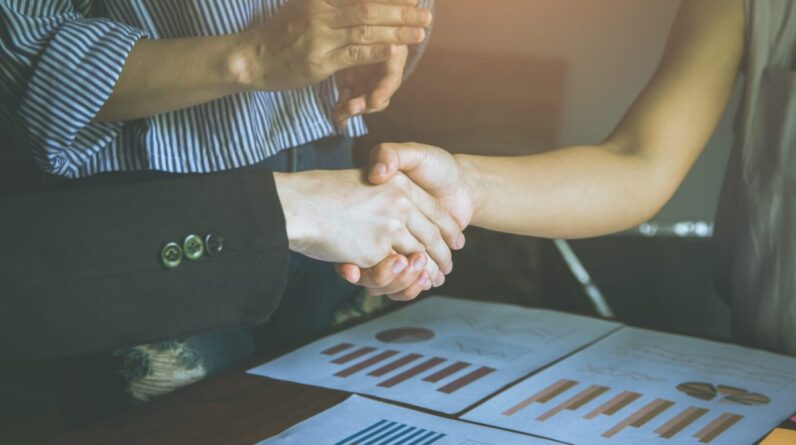
Tax season in the United States shouldn’t be confined to March and April alone. Our clients’ taxes and the tax-savings strategies we can devise for them should be on our minds year-round. Unfortunately, too often tax planning advice is almost entirely about identifying deductions. That’s a mistake that can lead to clients leaving money on the table.
I’ve worked with many high-net-worth individuals (HNWIs) — including the CEOs of some of the largest publicly traded and privately held companies in the United States — and too many of them fail to minimize their taxes. It may be because they are time constrained or lack a strategic tax advisory team. But I’ve also found HNWIs tend to think about investments in terms of immediate returns: They don’t consider the fees and expenses, tax costs, and long-term returns. And it’s in these areas where investment advisers and wealth managers can add the most value.
Constant Tax Code Changes Necessitate Constant Tax Planning
The tax code has been revised or amended almost 6,000 times since 2001. The Tax Cuts and Jobs Act passed in 2017, for example, is the largest revision of the tax code in 30 years. If you add in the SECURE Act, the proposed SECURE Act 2.0, and the related changes to retirement plan rules, the complexity can be overwhelming.
The original SECURE Act, which came into effect in 2020, has a number of implications for HNWIs. It pushed back required minimum distributions (RMDs) from age 70½ to 72 and removed the age limit on IRA contributions. The SECURE Act 2.0, which passed the House of Representatives and is now before the Senate, would increase the RMD age to 75 and allow for additional planning time in pre-RMD years.
So, however we look at them, taxes are always complicated and always in flux. To help our clients navigate them, here are my top five tax-planning and saving strategies.
1. Maximize Employer Benefits
Clients with earned income should take advantage of employer benefits early and often. While 401(k) options are pretty standard these days, high-income earners need to maximize mega-backdoor Roth options, health savings accounts (HSAs), and other valuable offerings.
Let’s do the math: If a client contributes $7,300 — the 2022 maximum for families — to an HSA each year, they will accumulate $146,000 in 20 years. If those funds grow at an annual rate of 7%, they will have $320,000.
If clients don’t use these funds for medical expenses, they can distribute them penalty-free after age 65, though the distributions will be subject to standard income tax. If they spend them on assisted living, unreimbursed medical bills, or other health care, at a 35% blended tax rate, they will still save over $110,000 in income taxes.
2. Leverage Charitable Gift Planning Options
To further maximize their tax saving, clients can also use appreciated, long-term securities instead of cash; donor-advised funds (DAFs); and charitable trusts. They can gift these securities without recognizing gains and also time the income tax deduction to occur in a high-tax-rate year.
For example, say a client makes a $250,000 cash donation to a charity but later that year needs that $250,000 for lifestyle expenses. To facilitate that, they sell $250,000 of investments with a cost basis of $100,000. Had they made the donation in stock and covered the personal expenses in cash, they could have saved almost $50,000. The lesson here: Charitable gift planning should include long-term, appreciated stock. Clients might also want to bunch their charitable contributions into a high-tax-rate year. That can provide serious, permanent tax savings.
3. Tax Loss Harvest in Down Markets
Clients don’t like to look at their investment account statement and see unrealized losses or an investment that is worth less than what they paid for it. But if they have to pay capital gains now or in the not-so-distant future, they may want to sell those positions to generate a capital loss and access the related tax benefits.
For example, let’s say a client has a stock investment that lost $100,000 and the client also sold a real estate investment this year that generated a $100,000 profit. If they sold the stock position and realized the loss — essentially monetizing a paper loss — they could offset the real estate gain and save on taxes. And if they reinvested the stock sale’s proceeds into a similar security, their overall investment position would be the same. (That is, so long as they didn’t put money in the same investment. That would violate the wash sale rule and make the loss unusable.)
Because capital losses carry forward indefinitely, this strategy could add value even if the client didn’t expect the subsequent gains to be generated for many years.
4. Convert Pre-Tax IRAs to Roth IRAs
Clients should convert their pre-tax IRA to a Roth IRA during down markets and low-income years. Roth IRAs don’t have an upfront tax break, but the contributions and earnings grow and are ultimately distributed tax-free. On the other hand, a pre-tax IRA provides a tax benefit when initially funded, but income is taxable at ordinary rates when distributed. With careful marginal rate tax planning, converting pre-tax IRAs to Roth IRAs can minimize the overall tax paid on the distributions.
While this is always a great tax-planning strategy, it may be an especially smart move in the present environment. The current tax to convert will be based on current value and should be significantly less than it would have been last winter due to 2022 market declines. When the market rebounds, clients could harvest that additional growth tax-free since they already paid the tax at conversion.
5. Coordinate Estate Planning and Income Tax Planning
Clients should consider gifting income-producing assets and assets with unrealized gains to family members in lower tax brackets, while keeping the “kiddie tax” rules in mind.
If a parent in the highest tax bracket has long-term stock worth $32,000 with an unrealized gain of $20,000, they can gift the annual exclusion amount to their offspring. Instead of selling the stock and gifting cash — which could generate federal tax of almost $5,000 — they can gift the stock direct to the child. The child would take the holding period and cost basis. And, as long as they are no longer a dependent, they could sell the stock and recognize the gain at their own tax rate.
This strategy may be especially timely for adult children in graduate school or those just starting their careers. They might be in a 0% federal long-term capital gains rate and able to sell the stock income-tax-free.
Taxes maybe one of the two certainties in this world, but that doesn’t mean our clients should overpay them. By offering tailored tax planning and strategies like these, we can ensure that they don’t and get them the best deal Uncle Sam has to offer.
If you liked this post, don’t forget to subscribe to Enterprising Investor.
All posts are the opinion of the author. As such, they should not be construed as investment advice, nor do the opinions expressed necessarily reflect the views of CFA Institute or the author’s employer.
Image credit: ©Getty Images/Piotrekswat
Professional Learning for CFA Institute Members
CFA Institute members are empowered to self-determine and self-report professional learning (PL) credits earned, including content on Enterprising Investor. Members can record credits easily using their online PL tracker.










